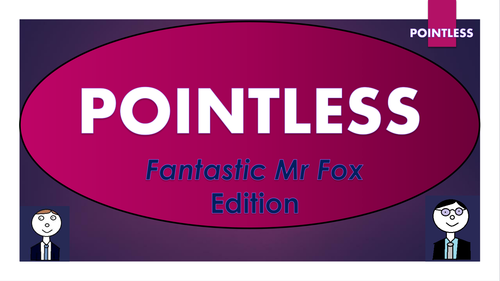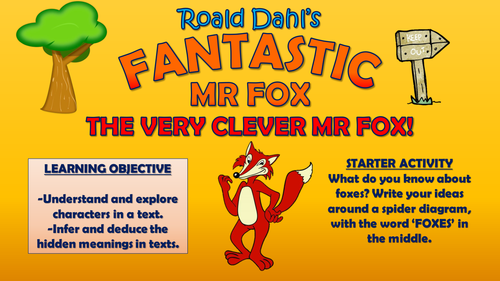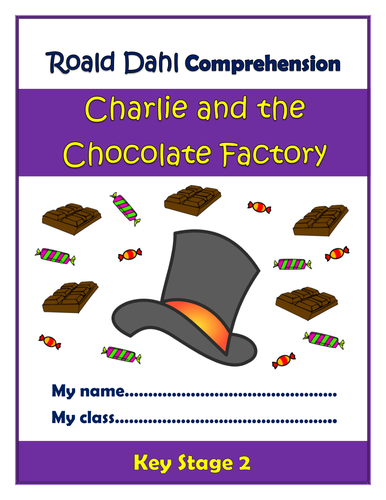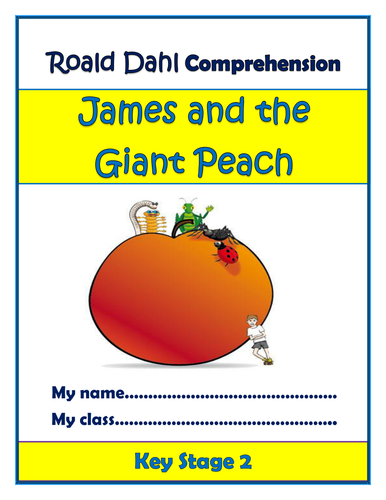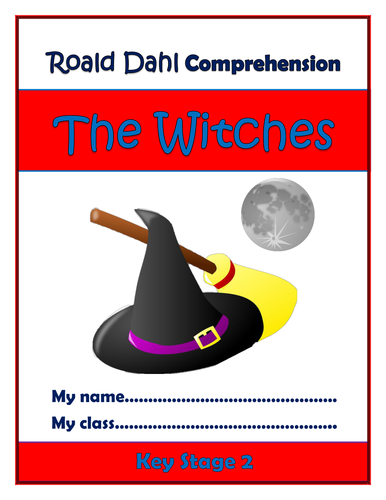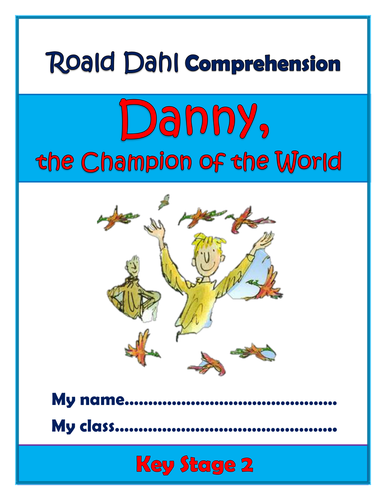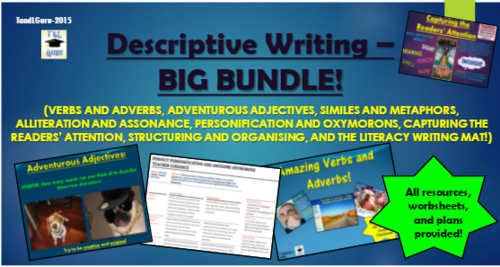
3k+Uploads
1922k+Views
2249k+Downloads
Literacy for early years

Delightful Determiners!
This interesting and engaging lesson enables students to understand what determiners are, categorise different types of determiners accurately, and use a wide range of appropriate determiners in their writing. In particular, students become familiar with the importance of determiners in a wide range of writing types, whilst learning through fun and interactive tasks:
Over the course of the lesson, they learn to:
- Define and exemplify determiners;
- Understand and categorise the different types of determiners;
- Analyse the effect of different types of determiners;
- Use a wide-range of accurate determiners in writing about interesting topics;
- Peer and self assess the use of determiners in writing.
The resources include:
-Visually engaging whole-lesson/s PowerPoint (around 26 slides)
-A colourful and helpful 'Delightful Determiners' Writing Mat;
-'The Effect of Determiners' worksheet and teacher's answer sheet;
-Noun cards to assist with the main task
-A model example;
-Step-by-step lesson plan.
All images are licensed for commercial use, and are cited on the final page of the slide.

Fantastic Mr Fox Pointless Game! (and template to create your own games!)
Based on the popular game show 'Pointless', this resource is perfect for use as a whole lesson resource, enrichment option, or revision tool. Editable, so that you can change to any other topic or change questions. (I've also added a blank template so that you can make your own games from scratch). Containing almost 30 slides of sound clips, interesting tasks, and suitably challenging questions, this resource is effective at both promoting engagement and enhancing learning. There are several full rounds of questions to build or revisit knowledge of characters, plot, and themes in 'Fantastic Mr Fox.'
Round 1. The characters in Fantastic Mr Fox
Round 2. Quotations from the text
Round 3. Settings and Objects
Round 4. Themes in Fantastic Mr Fox
The nature of this game ensures that the resource can challenge students of all levels.
A blank template has also been added, so that you can create your own games!

Fantastic Mr Fox - The Very Clever Mr Fox!
This fun and informative helps students to gain a deeper understanding of the main character in Roald Dahl’s ‘Fantastic Mr Fox:’ Mr Fox himself! Students use their skills of inference and deduction in order to establish key information about Mr Fox’s character, likes, dislikes, and mannerisms. They then create a character profile using the information that they have gathered!
The lesson follows a step-by-step learning journey, in which children learn through:
-Considering how Roald Dahl was influenced by real-life foxes in his characterisation;
- Reading and understanding extracts from the opening of Fantastic Mr Fox, in which Mr Fox's character traits are revealed;
- Inferring and deducing key features about Mr Fox from across the text;
- Creating a character profile for Mr Fox, utilising knowledge that they have gathered from over the course of the lesson;
- Self assessing their own learning attempts.
Included is:
- Whole lesson PowerPoint - colourful and comprehensive;
- Text Detectives Worksheet (and answer sheet);
- Selected extracts - Fantastic Mr Fox;
- Character Profile Template (Word and PDF);
- Comprehensive lesson plan.
There are also opportunities for group learning, speaking and listening, peer assessment, and whole class discussion. I originally used these resources with a mixed-ability year 3 class, however colleagues have used them for between years 1 and 8 with some adaptations.
All images are licensed for commercial use, and image rights are listed on the last page of the presentation.

Fantastic Mr Fox - Structure of the Story!
This fun and informative lesson helps students to understand the narrative structure used by Roald Dahl throughout ‘Fantastic Mr Fox.’ In particular, students identify the features of each stage of the narrative structure within the story, before recreating sections of the structure themselves!
The lesson follows a step-by-step learning journey, in which children learn through:
- Taking part in a fun group quiz to recap on the key elements of the plot leading up to the ending;
- Reading and understanding extracts from the ending of Fantastic Mr Fox, answering comprehension questions to demonstrate their understanding;
-Understanding features of narrative structure and applying the plot of Fantastic Mr Fox to the individual elements;
-Recreating elements of the plot, using their understanding of the stages of narrative structure;
- Self assessing their own learning attempts.
Included is:
- Whole lesson PowerPoint - colourful and comprehensive;
- Storyboard Template (and PDF version);
- Selected extracts - Fantastic Mr Fox;
- Recreations Template (and PDF version);
- Comprehensive lesson plan.
There are also opportunities for group learning, speaking and listening, peer assessment, and whole class discussion. I originally used these resources with a mixed-ability year 3 class, however colleagues have used them for between years 1 and 8 with some adaptations.
All images are licensed for commercial use, and image rights are listed on the last page of the presentation.

Much Ado About Nothing - Shakespeare's Language Choices
This engaging, in-depth lesson enables students to understand how Shakespeare uses a range of colourful and varied language choices to develop the theme of social grace in ‘Much Ado about Nothing.’ Much Ado About Nothing contains some of Shakespeare's most vibrant and interesting language, as characters such as Benedick and Claudio use words to jostle for respect around the noble Don Pedro and Leonato. This lesson explores the devices that they use in order to gain favour with their social superiors.
The lesson follows a step-by-step learning journey, in which students learn through:
- Defining and exemplifying different language devices, such as similes, metaphors, alliteration, and puns.
- Taking part in a fun team quiz to identity the language devices used by the main characters in Much Ado About Nothing.
- Understanding the idea of social grace, and learning how it relates to the social hierarchy within the text.
- Completing an essay style response in which they consider how Shakespeare uses language to develop the theme of social grace.
- Peer assessing each other's learning attempts.
Included is:
- Whole lesson PowerPoint - colourful and detailed - just download and teach from it!
- Cards for card-sorting activity;
- Social grace worksheet;
- Analysis template with success criteria for creating well-structured responses;
- Comprehensive lesson plan.
There are also opportunities for group learning, peer assessment, and whole class discussion. This was originally taught to higher ability year 9 and 10 groups, but can easily be differentiated for groups of different ages and abilities.

Much Ado About Nothing - Pointless Game!
Based on the popular game show 'Pointless', this resource is perfect for use as a whole lesson resource, enrichment option, or revision tool. Editable, so that you can change to any other topic or change questions. (I've also added a blank template so that you can make your own games from scratch). Containing almost 30 slides of sound clips, engaging visuals, and suitably challenging questions, this resource is effective at both promoting engagement and enhancing learning. There are several full rounds of questions to build or revisit knowledge of characters, plot, and themes in 'The Boy in the Striped Pyjamas.'
Round 1. The characters in Much Ado About Nothing
Round 2. Quotations from the text
Round 3. Settings, Themes, and Objects
Round 4. Shakespearean Comedies
The nature of this game ensures that the resource can challenge students of all levels.
A blank template has also been added, so that you can create your own games!

Charlie and the Chocolate Factory - Roald Dahl - KS2 Comprehension Activities Booklet!
This resource booklet contains a wide range of age-appropriate, engaging, and meaningful comprehension activities for use throughout the reading of Roald Dahl's 'Charlie and the Chocolate Factory.' Teachers have found them particularly useful in comprehension or guided reading sessions. They are perfect for aiding the progress of children towards meeting the KS2 expectations within the new National Curriculum framework. Children love learning from these resources, whilst they are also of great use to teachers, as there is explicit information within each task regarding which comprehension strands the task is designed to demonstrate. They also relate to key extracts, characters, and themes from the story, ensuring that children gain a deep understanding of the text.
Activities within the booklet include:
- 'An Interview with Charlie Bucket' - to enable students to demonstrate that they can: 'Understand what is read by drawing on information from more than one paragraph, identifying key details that support the main ideas, and using quotations for illustration;'
- 'Dahl's Description' - to enable students to demonstrate that they can: 'Explain meanings of words that they know and ask the meaning of new words. Link the meaning of new words to words that they already know;'
- 'Willy Wonka' - to enable students to demonstrate that they can: 'Understand what is read by drawing on information from more than one paragraph, identifying key details that support the main ideas, and using quotations for illustration;'
- 'Figurative Language' - to enable students to demonstrate that they can: 'Discuss and evaluate how authors use language, including figurative language, to create an impact on the reader.'
Plus many, many more activities (the booklet is around 20 pages in length!) I've also added it as a PDF in case the formatting differs on your computer.
All images are licensed for commercial use, and are cited on a separate document (included).

James and the Giant Peach - Roald Dahl - KS2 Comprehension Activities Booklet!
This resource booklet contains a wide range of age-appropriate, engaging, and meaningful comprehension activities for use throughout the reading of Roald Dahl's 'James and the Giant Peach.' Teachers have found them particularly useful in comprehension or guided reading sessions. They are perfect for aiding the progress of children towards meeting the KS2 expectations within the new National Curriculum framework. Children love learning from these resources, whilst they are also of great use to teachers, as there is explicit information within each task regarding which comprehension strands the task is designed to demonstrate. They also relate to key extracts, characters, and themes from the story, ensuring that children gain a deep understanding of the text.
Activities within the booklet include:
- 'An Interview with James' - to enable students to demonstrate that they can: 'Understand what is read by drawing on information from more than one paragraph, identifying key details that support the main ideas, and using quotations for illustration;'
- 'Dahl's Description' - to enable students to demonstrate that they can: 'Explain meanings of words that they know and ask the meaning of new words. Link the meaning of new words to words that they already know;'
- 'Sponge and Spiker' - to enable students to demonstrate that they can: 'Understand what is read by drawing on information from more than one paragraph, identifying key details that support the main ideas, and using quotations for illustration;'
- 'Figurative Language' - to enable students to demonstrate that they can: 'Discuss and evaluate how authors use language, including figurative language, to create an impact on the reader.'
Plus many, many more activities (the booklet is around 20 pages in length!) I've also added it as a PDF in case the formatting differs on your computer.
All images are licensed for commercial use, and are cited on a separate document (included).

The BFG - Roald Dahl - KS2 Comprehension Activities Booklet!
This resource booklet contains a wide range of age-appropriate, engaging, and meaningful comprehension activities for use throughout the reading of Roald Dahl's 'The BFG.' Teachers have found them particularly useful in comprehension or guided reading sessions. They are perfect for aiding the progress of children towards meeting the KS2 expectations within the new National Curriculum framework. Children love learning from these resources, whilst they are also of great use to teachers, as there is explicit information within each task regarding which comprehension strands the task is designed to demonstrate. They also relate to key extracts, characters, and themes from the story, ensuring that children gain a deep understanding of the text.
Activities within the booklet include:
- 'An Interview with Sophie' - to enable students to demonstrate that they can: 'Understand what is read by drawing on information from more than one paragraph, identifying key details that support the main ideas, and using quotations for illustration;'
- 'Dahl's Description' - to enable students to demonstrate that they can: 'Explain meanings of words that they know and ask the meaning of new words. Link the meaning of new words to words that they already know;'
- 'The Giant' - to enable students to demonstrate that they can: 'Understand what is read by drawing on information from more than one paragraph, identifying key details that support the main ideas, and using quotations for illustration;'
- 'Figurative Language' - to enable students to demonstrate that they can: 'Discuss and evaluate how authors use language, including figurative language, to create an impact on the reader.'
Plus many, many more activities (the booklet is around 20 pages in length!) I've also added it as a PDF in case the formatting differs on your computer.
All images are licensed for commercial use, and are cited on a separate document (included).

The Witches - Roald Dahl - KS2 Comprehension Activities Booklet!
This resource booklet contains a wide range of age-appropriate, engaging, and meaningful comprehension activities for use throughout the reading of Roald Dahl's 'The Witches.' Teachers have found them particularly useful in comprehension or guided reading sessions. They are perfect for aiding the progress of children towards meeting the KS2 expectations within the new National Curriculum framework. Children love learning from these resources, whilst they are also of great use to teachers, as there is explicit information within each task regarding which comprehension strands the task is designed to demonstrate. They also relate to key extracts, characters, and themes from the story, ensuring that children gain a deep understanding of the text.
Activities within the booklet include:
- 'An Interview with The Grand Head Witch' - to enable students to demonstrate that they can: 'Understand what is read by drawing on information from more than one paragraph, identifying key details that support the main ideas, and using quotations for illustration;'
- 'Dahl's Description' - to enable students to demonstrate that they can: 'Explain meanings of words that they know and ask the meaning of new words. Link the meaning of new words to words that they already know;'
- 'Description of the Grand Head Witch' - to enable students to demonstrate that they can: 'Understand what is read by drawing on information from more than one paragraph, identifying key details that support the main ideas, and using quotations for illustration;'
- 'Figurative Language' - to enable students to demonstrate that they can: 'Discuss and evaluate how authors use language, including figurative language, to create an impact on the reader.'
Plus many, many more activities (the booklet is around 20 pages in length!) I've also added it as a PDF in case the formatting differs on your computer.
All images are licensed for commercial use, and are cited on a separate document (included).

Danny, the Champion of the World - Roald Dahl - KS2 Comprehension Activities Booklet!
This resource booklet contains a wide range of age-appropriate, engaging, and meaningful comprehension activities for use throughout the reading of Roald Dahl's 'Danny, the Champion of the World.' Teachers have found them particularly useful in comprehension or guided reading sessions. They are perfect for aiding the progress of children towards meeting the KS2 expectations within the new National Curriculum framework. Children love learning from these resources, whilst they are also of great use to teachers, as there is explicit information within each task regarding which comprehension strands the task is designed to demonstrate. They also relate to key extracts, characters, and themes from the story, ensuring that children gain a deep understanding of the text.
Activities within the booklet include:
- 'An Interview with Danny' - to enable students to demonstrate that they can: 'Understand what is read by drawing on information from more than one paragraph, identifying key details that support the main ideas, and using quotations for illustration;'
- 'Dahl's Description' - to enable students to demonstrate that they can: 'Explain meanings of words that they know and ask the meaning of new words. Link the meaning of new words to words that they already know;'
- 'Description of Mr. Victor Hazell' - to enable students to demonstrate that they can: 'Understand what is read by drawing on information from more than one paragraph, identifying key details that support the main ideas, and using quotations for illustration;'
- 'Figurative Language' - to enable students to demonstrate that they can: 'Discuss and evaluate how authors use language, including figurative language, to create an impact on the reader.'
Plus many, many more activities (the booklet is around 20 pages in length!) I've also added it as a PDF in case the formatting differs on your computer.
All images are licensed for commercial use, and are cited on a separate document (included).

Magazines - Writing Reviews!
This interesting and engaging lesson enables students to know what reviews are and why people read them, understand the features that make effective reviews, and write their own interesting and appropriate reviews. In particular, students learn to use a range of appropriate features in writing their own magazine reviews, including facts and opinions, jargon, connectives, and statistics. There are easily enough resources here for 2-3 lessons on this topic.
Over the course of their learning journey, students:
- Define and exemplify what reviews are;
- Understand why people read reviews;
- Understand and categorise the different techniques used by reviewers;
- Identify the features of reviews in model examples;
- Analyse the effect of techniques in reviews upon the reader;
- Use a wide-range of techniques in writing their own reviews;
- Peer and self assess each other's review attempts.
The resources include:
-Visually engaging whole-lesson PowerPoint;
-A colourful and helpful 'Writing Reviews' Help-Sheet;
-Pointless Jargon Game;
-Techniques cards for defining the key key features of reviews;
-Connectives worksheet;
-Blank book review template and film review template;
-A model example (Harry Potter and the Philosopher's Stone);
-Helpful and comprehensive step-by-step lesson plan.
All images are licensed for commercial use, and are cited on the final page of the slide.

Descriptive Devices - Knowing the Words Inside Out! (Helpsheets, Posters and Worksheet Templates)
These colourful, engaging and informative posters/ help-sheets are perfect to help your students gain a broad and deep understanding of each of the key descriptive devices, thus vastly improving their textual analysis and enhancing their creative writing attempts.
Each sheet displays the key word in the middle, and then answers some of the key questions surrounding the words, including:
- What does it mean?
- How many syllables does it have?
- What are examples of it?
- How do I spell it?
- When would I use this?
- What type of word is it?
- Where does the word come from?
There are sheets for: Similes, Metaphors, Hyperbole, Adjectives, Adverbs, Alliteration, Onomatopoeia, Verbs, Personification, and Verbs. These can be used as help-sheets as students write (my students love this) or blown up to A3 to use as classroom posters.
I have also provided blank templates for each word, so that students can fill in the everything that they know about the words themselves, which makes for an excellent starter, plenary, or recap activity.

Descriptive Writing - Full Assessment including Insert and Mark Scheme
I have recently taught a descriptive writing unit, and devised this assessment to gauge how students descriptive skills have progressed over the term. It includes the question paper, the mark scheme, and the reading insert.
Formal enough to ensure that the students took the assessment seriously, but engaging enough to ensure that all students wanted to complete all of the tasks, (they hate some of the practice exam questions that exam boards provide on the past papers) all of my students seemed to enjoy completing this more than they normally enjoy assessments!
The assessment is designed to gauge students' skill in:
- Defining and giving examples of descriptive devices;
- Identifying descriptive devices in texts;
- Analysing the effect of descriptive writing in a vivid description of a 'Nightmare World.'
- Creating their own descriptive piece about a their own nightmare world.
This lesson can either be bought individually, or as part of the Descriptive Writing Big Bundle (which works out cheaper.)

Pointless - Building Varied Verbs Edition
Based on the popular game show 'Pointless', this resource is perfect for use as a starter activity, plenary, or revision tool. Editable, so that you can change to any other topic or change the questions/answers. Containing almost 30 slides of sound clips, engaging visuals, and suitably challenging questions, this resource is effective at both promoting engagement and enhancing learning.
There are several full rounds of questions to build students' understanding of verbs, including:
1. Finding synonyms of dull verbs
2. Defining verbs
3. Unscrambling anagrams of verbs
4. Finding the most complex and interesting verbs
The nature of the game ensures that this resource can challenge students of all levels.

George's Marvellous Medicine - Roald Dahl - KS1 Comprehension Activities Booklet!
This resource booklet contains a wide range of age-appropriate, engaging, and meaningful comprehension activities for use throughout the reading of Roald Dahl's 'George's Marvellous Medicine.' Teachers have found them particularly useful in comprehension or guided reading sessions. They are perfect for aiding the progress of children towards meeting the KS1 expectations within the new National Curriculum framework. Children love learning from these resources, whilst they are also of great use to teachers, as there is explicit information within each task regarding which comprehension strands the task is designed to demonstrate. They also relate to key extracts, characters, and themes from the story, ensuring that children gain a deep understanding of the text.
Activities within the booklet include:
- 'Feed Grandma' - to enable students to demonstrate that they can: 'talk about their favourite words and phrases in the story;'
- 'Dahl's Description' - to enable students to demonstrate that they can: 'Explain meanings of words that they know and ask the meaning of new words. Link the meaning of new words to words that they already know;'
- 'George's Idea' - to enable students to demonstrate that they can: 'Say what might happen next in a story based on what has happened so far;'
- 'Grandma' - to enable students to demonstrate that they can: 'Enjoy reading and discussing the order of events in books and how items of information are related.'
Plus many, many more activities (the booklet is around 20 pages in length!) I've also added it as a PDF in case the formatting differs on your computer.
All images are licensed for commercial use, and are cited on a separate document (included).

Fantastic Mr Fox - Roald Dahl - KS1 Comprehension Activities Booklet!
This resource booklet contains a wide range of age-appropriate, engaging, and meaningful comprehension activities for use throughout the reading of Roald Dahl's 'Fantastic Mr Fox.' (Teachers have found them particularly useful in comprehension or guided reading sessions). They are perfect for aiding the progress of children towards meeting the KS1 expectations within the new National Curriculum framework. Children love learning from these resources, whilst they are also of great use to teachers, as there is explicit information within each task regarding which comprehension strands the task is designed to demonstrate. They also relate to key extracts, characters, and themes from the story, ensuring that children gain a deep understanding of the text.
Activities within the booklet include:
- 'Feed the Foxes' - to enable students to demonstrate that they can: 'talk about their favourite words and phrases in the story;'
- 'Dahl's Description' - to enable students to demonstrate that they can: 'Explain meanings of words that they know and ask the meaning of new words. Link the meaning of new words to words that they already know;'
- 'Bean's Plan' - to enable students to demonstrate that they can: 'Say what might happen next in a story based on what has happened so far;'
- 'Mr Fox' - to enable students to demonstrate that they can: 'Enjoy reading and discussing the order of events in books and how items of information are related.'
Plus many, many more activities (the booklet is around 20 pages in length!) I've also added it as a PDF in case the formatting differs on your computer.
All images are licensed for commercial use, and are cited on a separate document (included).
Bundle Sale

Descriptive Writing Big Bundle! (All PowerPoints, Lesson Plans, Worksheets, Help-sheets, Games, and More!)
This big bundle pack offers a comprehensive range of descriptive writing lessons, (everything that you will need for them - whole lesson PowerPoints, worksheets, lesson plans - everything) help-sheets, writing templates, and activities.
It is a slightly streamlined version of the Descriptive Writing Huge Bundle (minus the VCOP lessons, as those teaching slightly older/more advanced students may not need these lessons.)
Individually, these items amount to 27 pounds. Therefore the saving that you can make from purchasing the bundle is 70%!
Included are whole lesson resources (normally 2 pounds each) for:
-Amazing verbs and adverbs
-Adventurous adjectives
-Astonishing alliteration
-Capturing the readers' attention
-Exceptional expanded noun phrases
-Perfect personification and awesome oxymorons
-Structuring and organising creative writing
-Stupendous similes and miraculous metaphors
-Wondrous writing - seven wonders of the world
-Writing about Emotions
There are also a number of games and help-sheets, including:
- All 8 writing purpose help-sheets (Analyse, Explain, Inform, Persuade, Describe, Instruct, Evaluate, Argue)
-Descriptive writing assessment and mark scheme
-Descriptive writing - knowing the words inside out posters.
- Literacy writing mat
-2 'Pointless' games
- Templates (Newspapers, Blogs, Postcards, etc.)
All images are licensed for commercial use and are cited on the final slides of the PowerPoints.
Bundle Sale

Descriptive Writing Lesson Bundle! (All PowerPoints, Resources, Activities and Lesson Plans!)
This big bundle pack offers a comprehensive range of descriptive writing lessons, (everything that you will need for them - whole lesson PowerPoints, worksheets, lesson plans - everything) help-sheets, writing templates, and activities. Each lesson is stimulating, informative, and offers a range of tasks for students of different needs and abilities.
Individually, these items amount to 20 pounds. Therefore the saving that you can make from purchasing the bundle is 70%!
Included are whole lesson resources (normally 2 pounds each) for:
-Amazing Verbs and Adverbs;
-Adventurous Adjectives;
-Astonishing Alliteration and Astounding Assonance;
-Capturing the Readers' Attention;
-Exceptional Expanded Noun Phrases;
-Perfect Personification and Awesome Oxymorons;
-Structuring and Organising Creative Writing;
-Stupendous Similes and Miraculous Metaphors;
-Wondrous Writing - Seven Wonders of the World.
-Writing about Emotions
All images are licensed for commercial use and are cited on the final slides of the PowerPoints.
Bundle Sale

Punctuation Lesson Bundle!
These engaging and detailed resources have been designed to make the learning of tricky punctuation concepts (which are particularly prominent in the most recent curriculum) easily accessible, engaging and interesting for all children. Throughout each lesson, students learn to improve their skill at using appropriate, concise, and precise spelling, punctuation, and grammar, and practice employing them within their own writing compositions. Each lesson contains a comprehensive whole lesson PowerPoint, all the resources that you will need, and a lesson plan.
Included are lessons on:
- Awesome Apostrophes and Incredible Inverted Commas;
- Ellipses, Question Marks, and Exclamation Marks;
- Using Colons and Semi-colons.
The pack also includes a literacy writing mat to help students build their extended writing skills.
All images are licensed for commercial use, and are cited on the final slide of the PowerPoint/ the bottom of worksheets.


